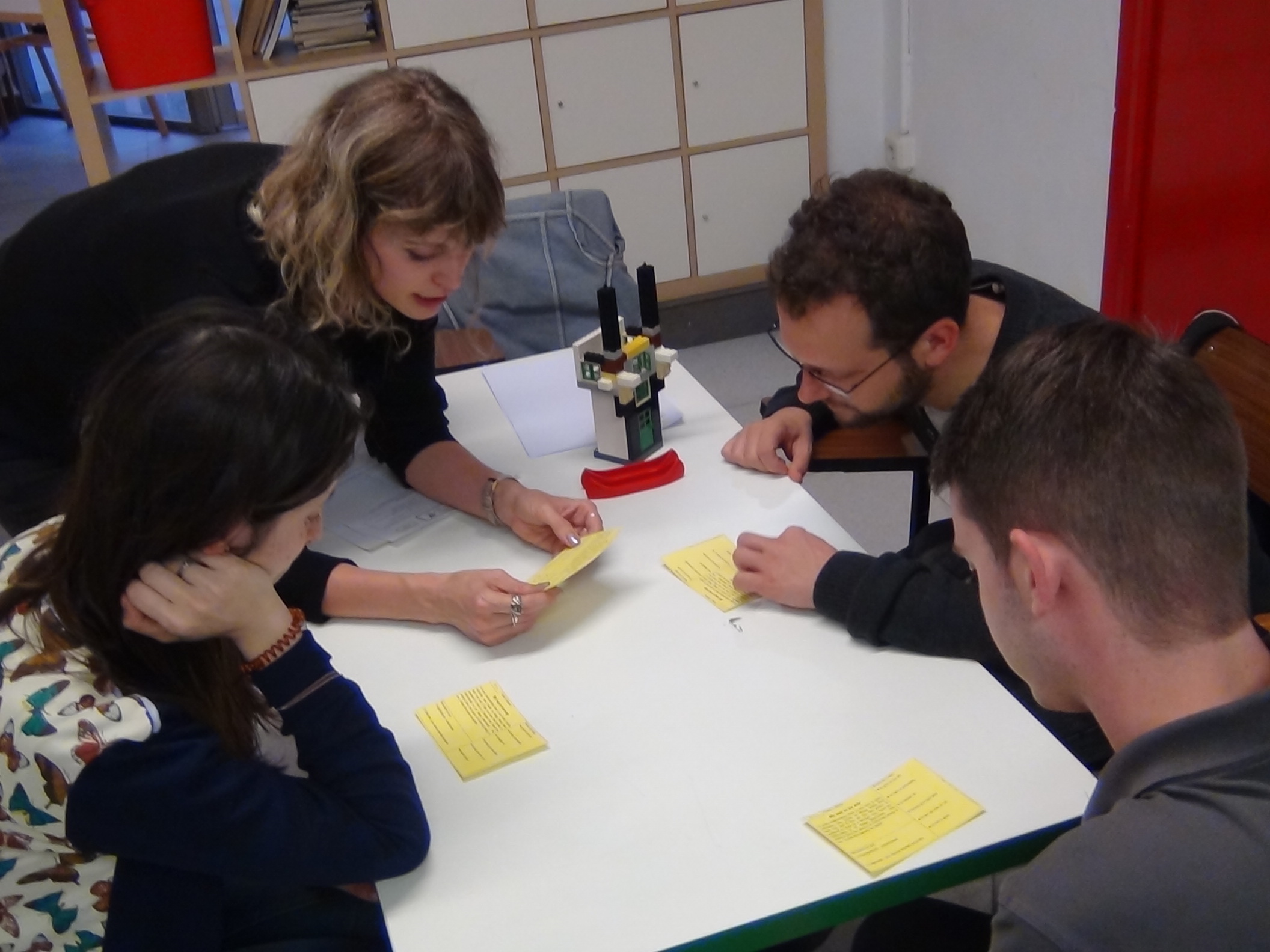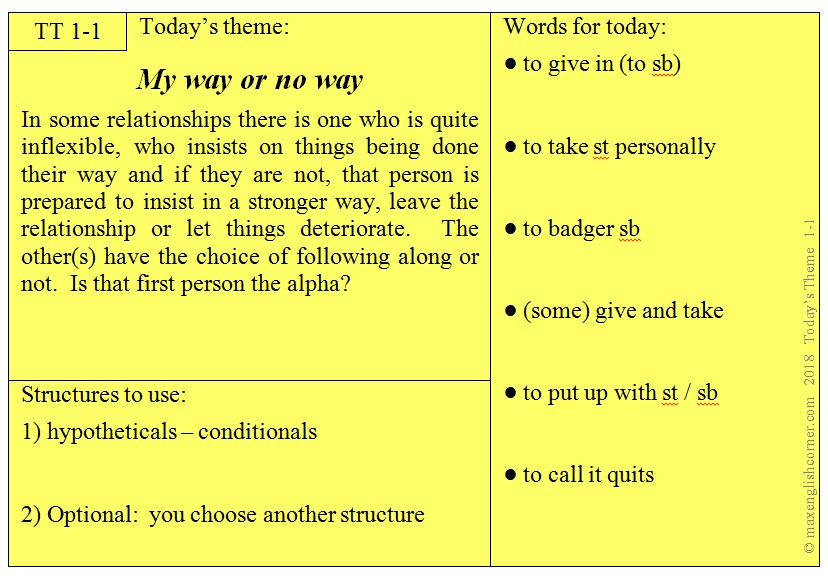easy-to-use speaking activity

“Speaking is difficult.” This is the declaration heard coming from the lips of many a student. Simply put, this section of the website is dedicated to providing teachers with a variety of themes and accompanying vocabulary which their students can use for in-class speaking activities. For each theme there are 3 discussion questions to choose from, some relevant vocabulary that the students are encouraged to use and an optional grammatical structure for the more ambitious ones.
There are no specific levels assigned for the speaking activities. They are appropriate for any strong intermediate class up through to and including advanced, although some of the grammar options would be better suited for the more advanced students.
Possible situations to use Today’s Theme in
Today’s Theme will present a collection of different themes not only well suited for conversation classes but also for those parts of your lesson plan in other kinds of classes where you want to have the students speak about a certain topic. Here are some situations when you might find it appropriate to use it.
A brief explanation of the makeup of the theme cards

1 – Perhaps you have some students who wander into the classroom a little later than others. This could serve as a warmer for 5 to 10 minutes while waiting for the others. It might even provide some incentive for those others to come on time.
2 – You have 10 minutes to kill at the end of the class and nothing left on the agenda to cover.
3 – You like to have something for ‘an emergency’, just in case. This is something that you can easily bring with you or have on hand for such an occasion.
4 – You are doing a substitution class and are looking for ideas.
5 – You have a new group of students and you want to check their level of speaking in English. Once you introduce the activity you can listen in and see how they’re making out.
6 – Students have told you that they’d like to increase their vocabulary and do more speaking in class.
7 – You have some clear ideas on assessing your students’ level of proficiency and how to go about improving some elements. The themes presented help provide the vehicle for that end.
8 – You are tired and don’t have energy left to plan anything else.
9 – You have tried a few before and they worked well so you’re interested in checking a few more out.
–
The complete card
Basically it’s a card which each student receives, divided into the 3 sections described below. One option is that they can keep the card and write the definitions of the vocabulary directly onto it, or they return it to you so you can use it for another class. In the latter case they write any definitions in an appropriate place in their notebooks. There are four cards per sheet so you can save some money and paper when making copies. If you like, you can impress your students by printing the cards onto a harder (longer-lasting) carton paper that isn’t the standard white. (For example yellow is a cheerful colour and makes for easy reading.)
The top left section
This contains the theme title and a brief description, usually with a task for the students to explore in their speaking (such as agreeing or disagreeing, finding examples in their own experiences or making comments on the situation). Feel free to modify or add to the task in any way you feel appropriate.
The right hand section
This provides six expressions, phrasal verbs or other vocabulary that might be interesting for your students to learn and use again in future situations. It’s possible there might be a few items that the students have come across before but perhaps they don’t frequently use them in their speaking. They should be familiar with all six items before the exploring the theme, and while speaking, try to incorporate at least two of them.
The bottom left section
This is an option which encourages the use of specific grammatical structures such as the use of hypothetical conditionals or comparatives). If you feel it’s too much you can leave this section out but as you become more familiar with Today’s Theme cards, you might want to try this part out at a later date. There are some tips to help deliberate inclusion of grammar be successfully done in the SUGGESTED APPROACH guide below.
THE THEMES
Each theme has 3 related discussion topics with their own sets of associated vocabulary
Today’s Theme 1 (click here to open the page)
1 Alphas (click here for a listing of the 3 topics)
1 My way or no way
2 Are bullies natural and desirable?
3 What is a good leader?
Today’s Theme 2
2 Culture
1 Origin and meaning of our holidays
2 Why is culture important?
3 Are subcultures important?
Today’s Theme 3
3 Shopping
1 Shopping is great
2 Shopping strategies
3 Changing trends in shopping
Today’s Theme 4
4 Eating
1 Nothing like a home-cooked meal
2 Going out or eating at home
3 Bad eating habits
Today’s Theme 5
5 The Paranormal
1 Déjà Vü
2 Telepathy
3 Cyborgs
Today’s Theme 6
6 Friendship
1 Best friends forever
2 Family vs friends
3 Friend(ly) services
